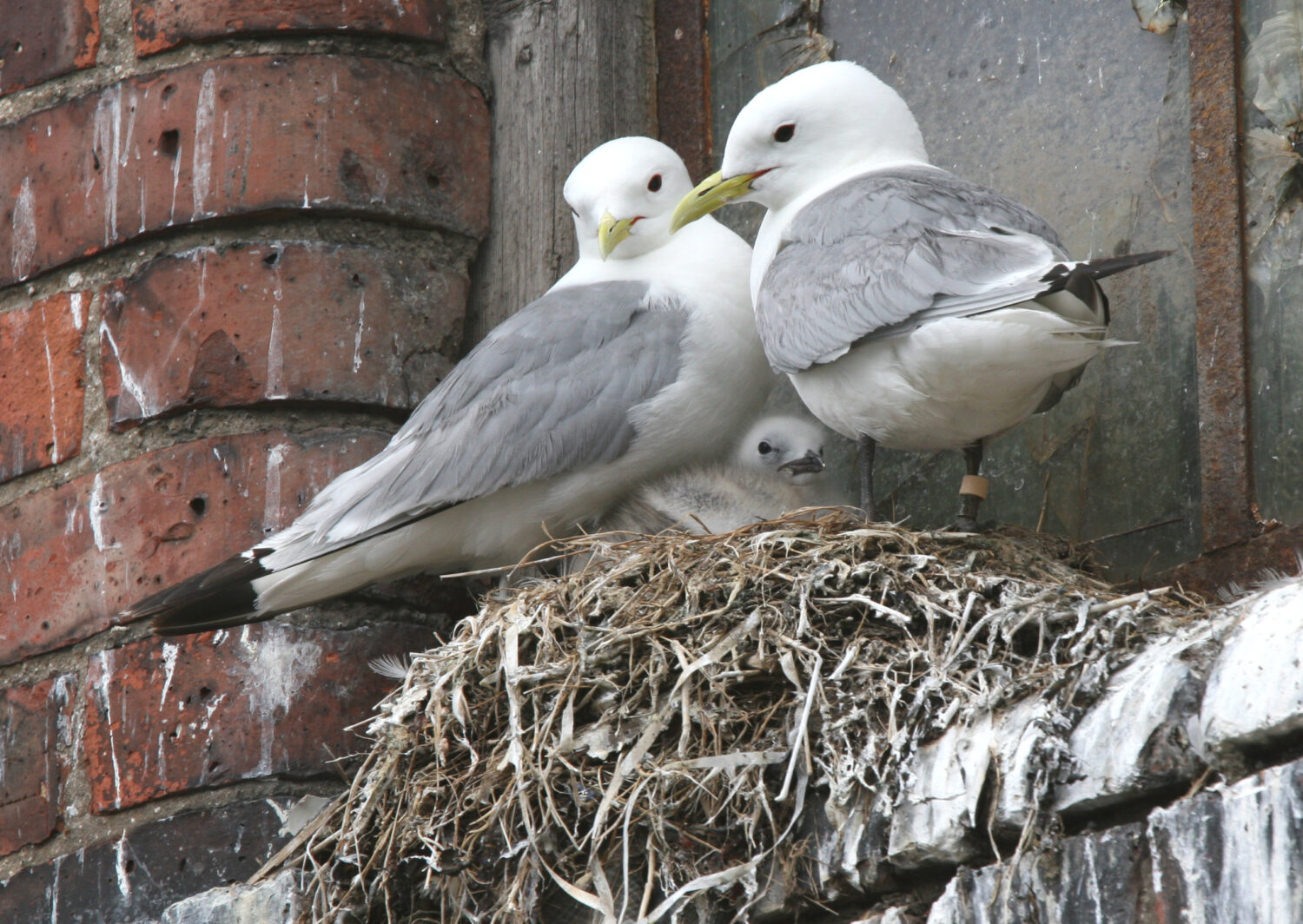Tyne Kittiwakes
Newcastle is home to the world’s most inland colony of breeding Kittiwakes, monitored annually by local ornithologist, Dan Turner.
A Unique Wildlife Spectacle
Since the 1960s, the River Tyne has supported the most inland breeding colony of kittiwakes in the world. Each spring, these pelagic gulls return to the Newcastle-Gateshead Quayside where they nest on buildings and structures, including the Tyne Bridge. The kittiwakes are now part of this iconic cityscape and a tourist attraction in their own right, enchanting not only naturalists but local people too.
A local ornithologist and NHSN member, Daniel Turner, has been monitoring the Tyne kittiwakes since 1994 during which time a great increase in their numbers at Newcastle-Gateshead Quayside has been recorded. This is incredible, not just because of the special place these birds have chosen to nest, but in light of the significant reductions in kittiwake populations elsewhere.
Why are Newcastle’s Kittiwakes Important?
Globally, kittiwakes are thought to have declined by around 40% since the 1970s and were added to the Birds of Conservation Concern Red List in 2015. This was followed by the species being uplisted from Least Concern to Vulnerable in 2017. In the UK, kittiwake numbers have plummeted, particularly in Orkney and Shetland where breeding birds have declined by 87% since 2000.
Contrary to declines elsewhere in the UK, Newcastle’s Kittiwakes are thriving with increasing numbers observed by local ornithologists each year. This means that not only are the Tyne Kittiwakes a much-loved part of life in the city, but an important colony worthy of protection.

About Daniel Turner
Born in Tynemouth, Dan was interested in birds from an early age and quite soon, specialised in fulmars and gulls. He has long taken a close interest in the birds/gulls of the River Tyne.
Dan has been an active member of RSPB since around 1970, Northumberland & Tyneside Bird Club since 1974, and NHSN since around 1980 and has completed annual nesting Kittiwake surveys along River Tyne since 1994 while also serving as Acting Secretary of Tyne Kittiwake Partnership.
Away from Kittiwakes, Dan is a Wetland Bird Surveyor (WeBS project) and initiated the Northeast England Beached Bird Survey (NEBBS) in 2002 which he continues to lead, including laboratory work investigating marine pollution. He is also the North East England Coordinator of the international ‘Save the North Sea’ Fulmar Project since 2002.
Kittiwake Population Monitoring
By Daniel Turner
For many years, I recorded the colour-ringed gulls which visited North Shields fish quay, for example, in the 1980s and 1990s. These included the large gulls, such as Herring Gull and Great Black-backed, but also Kittiwakes and other species too. I would send my regular hand-written paper reports to the ringers of many of these birds – researchers based at Durham University, and they would write back to me. I also noted their colour-ringed waders.
In the mid-1980s, I surveyed and checked on the breeding productivity of Kittiwakes at Marsden Bay (South Tyneside) as part of a national study led by Professor Mike Harris. I followed the recommended methodology for such work. I also made some observations of nesting Kittiwakes along the North Shields quaysides and already knew of the long-term kittiwake study led by Dr John Coulson at the Brewery Bond Warehouse beside Smith’s Dock, meeting some of the researchers.
As time progressed, I felt a need to learn more about the River Tyne nesting Kittiwakes, such as where they were nesting, how many there were and how well they were faring. In 1994, this developed into a study of nesting at all the river sites of which I knew, and I recorded nests and chicks through observation. The study hooked me, and I continued with observations over several years, at first recording only those nests which successfully reared young. It was important to be able to compare breeding productivity with other nesting locations, so I expanded my methodology to re-adopt that of the 1980s surveys in which I had participated – and also used by the Seabird Monitoring Programme – and that is how my studies progress to this day.
I use binoculars, a telescope and a tripod, carefully recording in my notebooks to write up and analyse later. It is interesting to see the reactions of people as I carry out my surveys and always good to talk with them and educate.

Kittiwake Population Data
See these links for recent and historic population data on Tyneside’s urban kittiwakes.
Kittiwakes on the Tyne, 1994-2019
Since the early 1990s, local ornithologist Daniel Turner has monitored Newcastle and Gateshead’s Tyne Kittiwakes.
Recording the highs and lows, successes and failures of the colony, an overview of Dan’s research was shared in a recent edition of Northumberland Coastal Wildlife.

Kittiwakes on the Tyne, 1994-2019
Explore a recent talk by Dan Turner sharing the highs and lows of Newcastle’s Tyne Kittiwakes since the early 1990s.